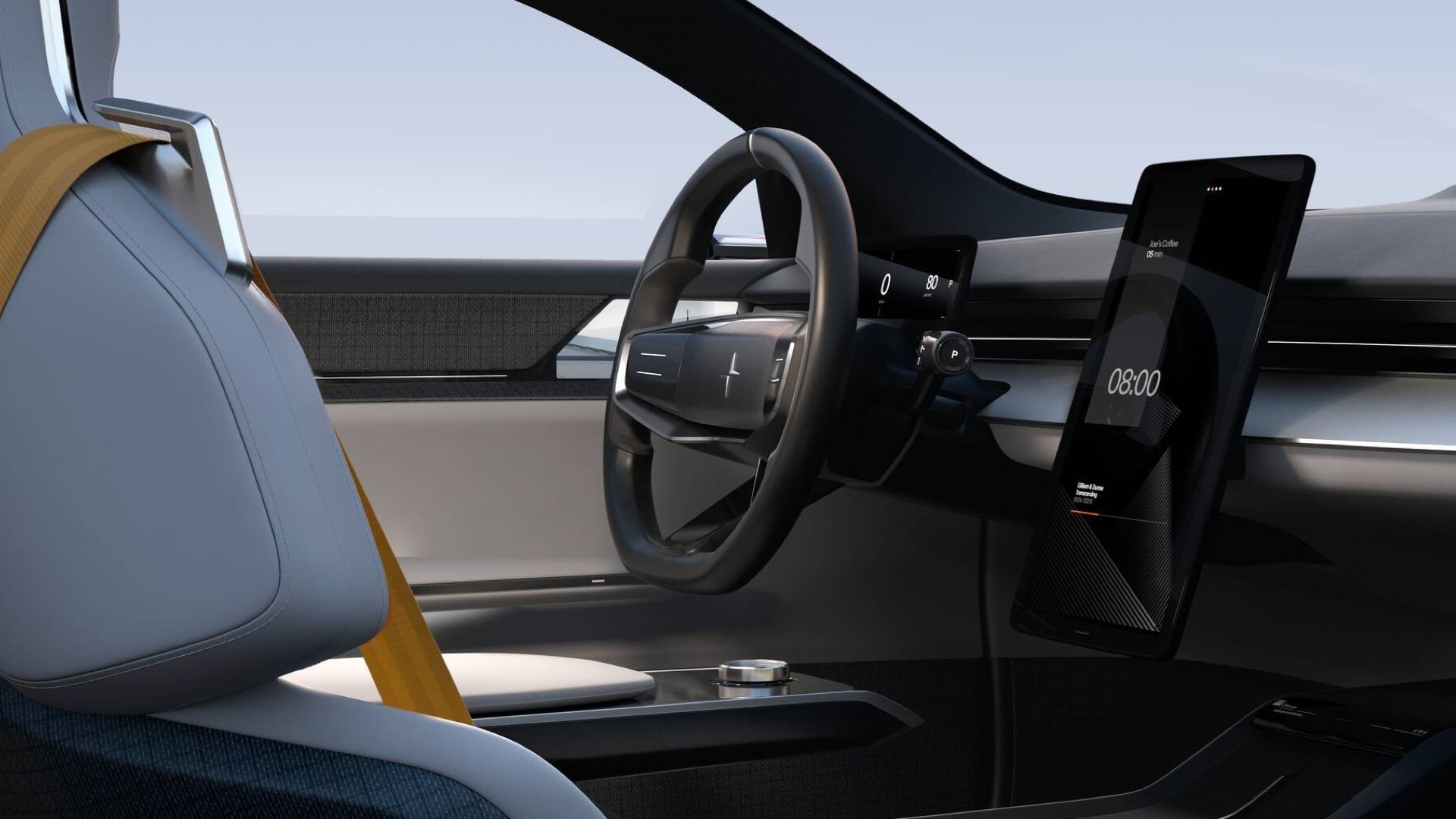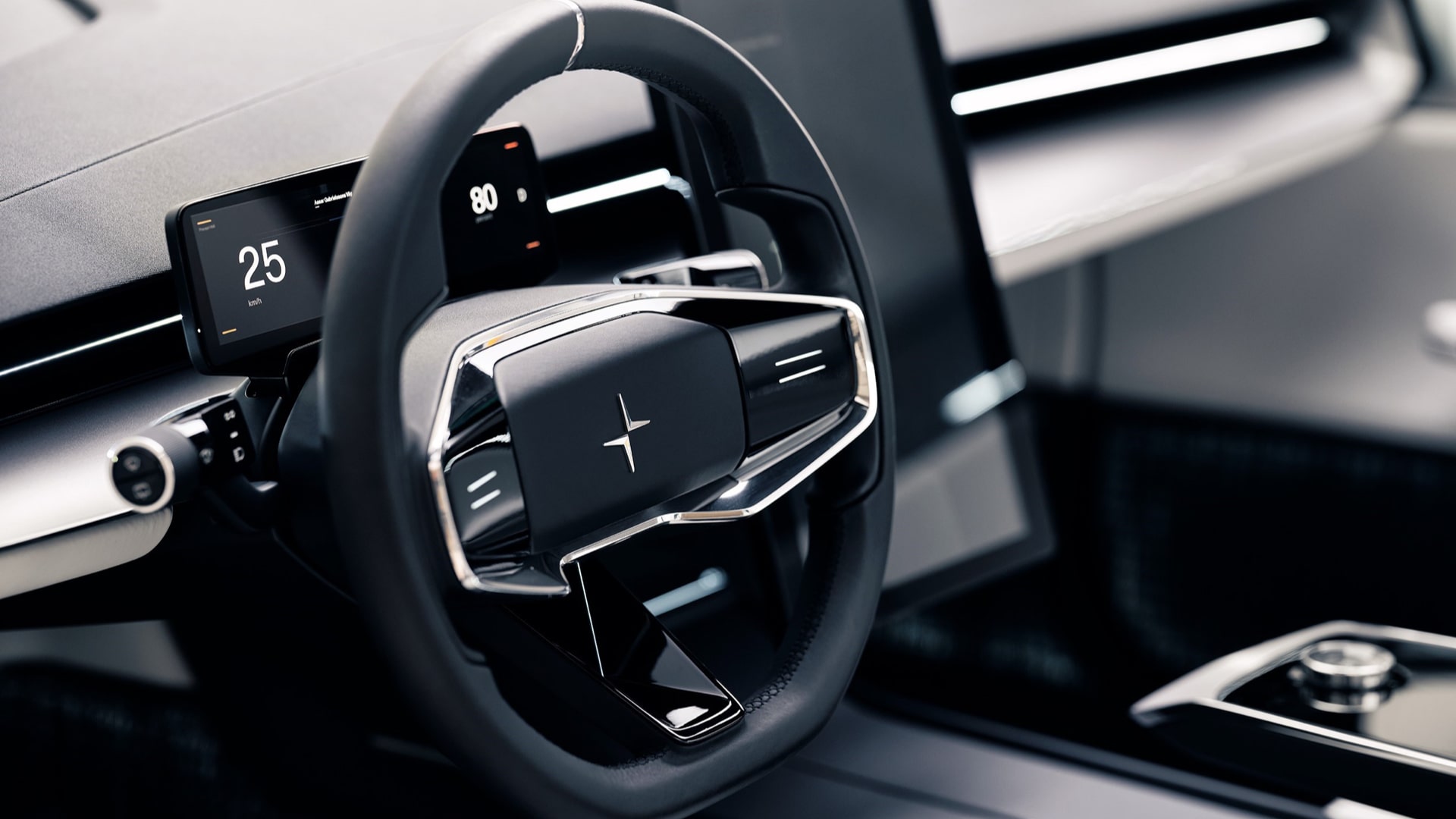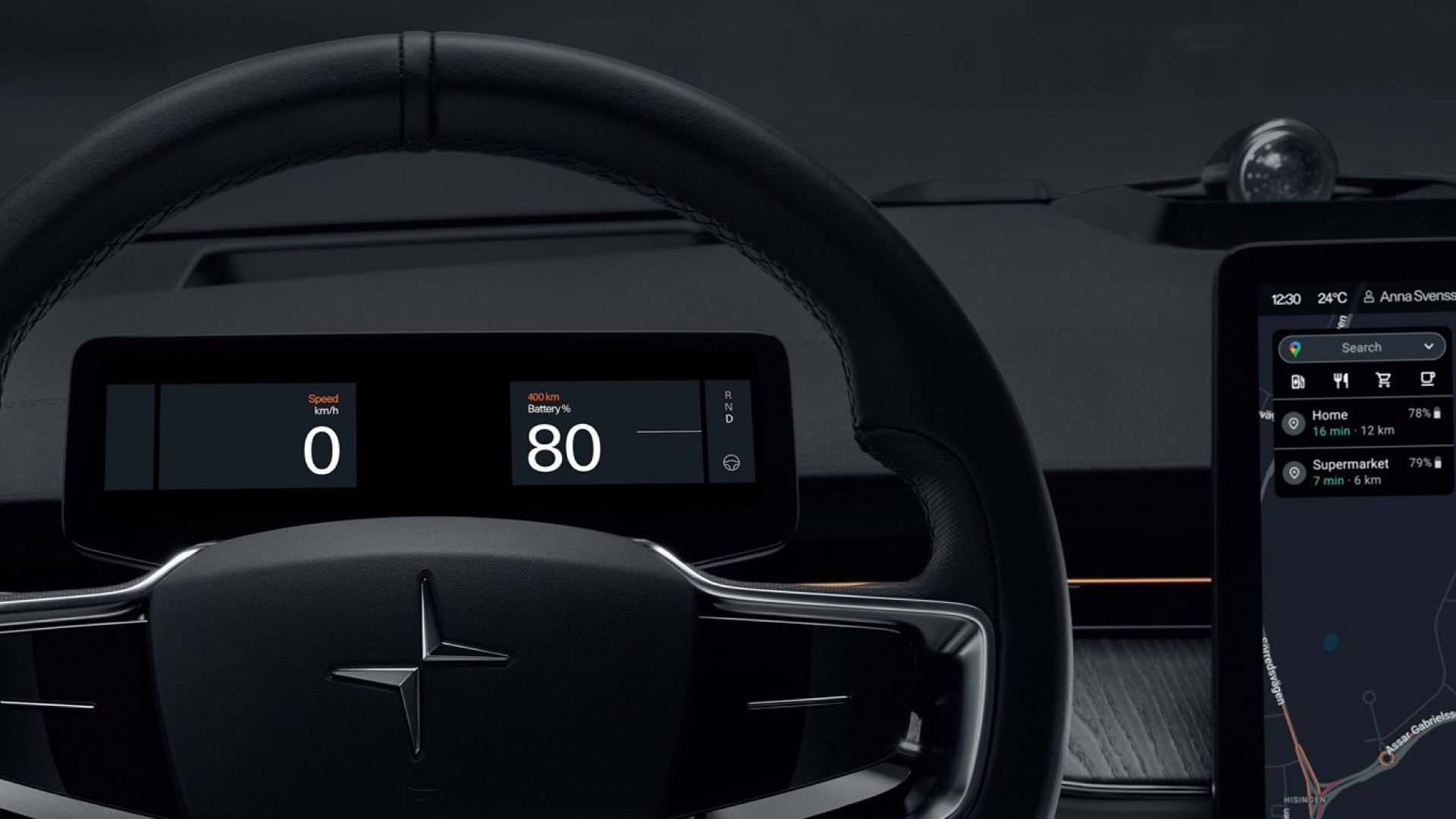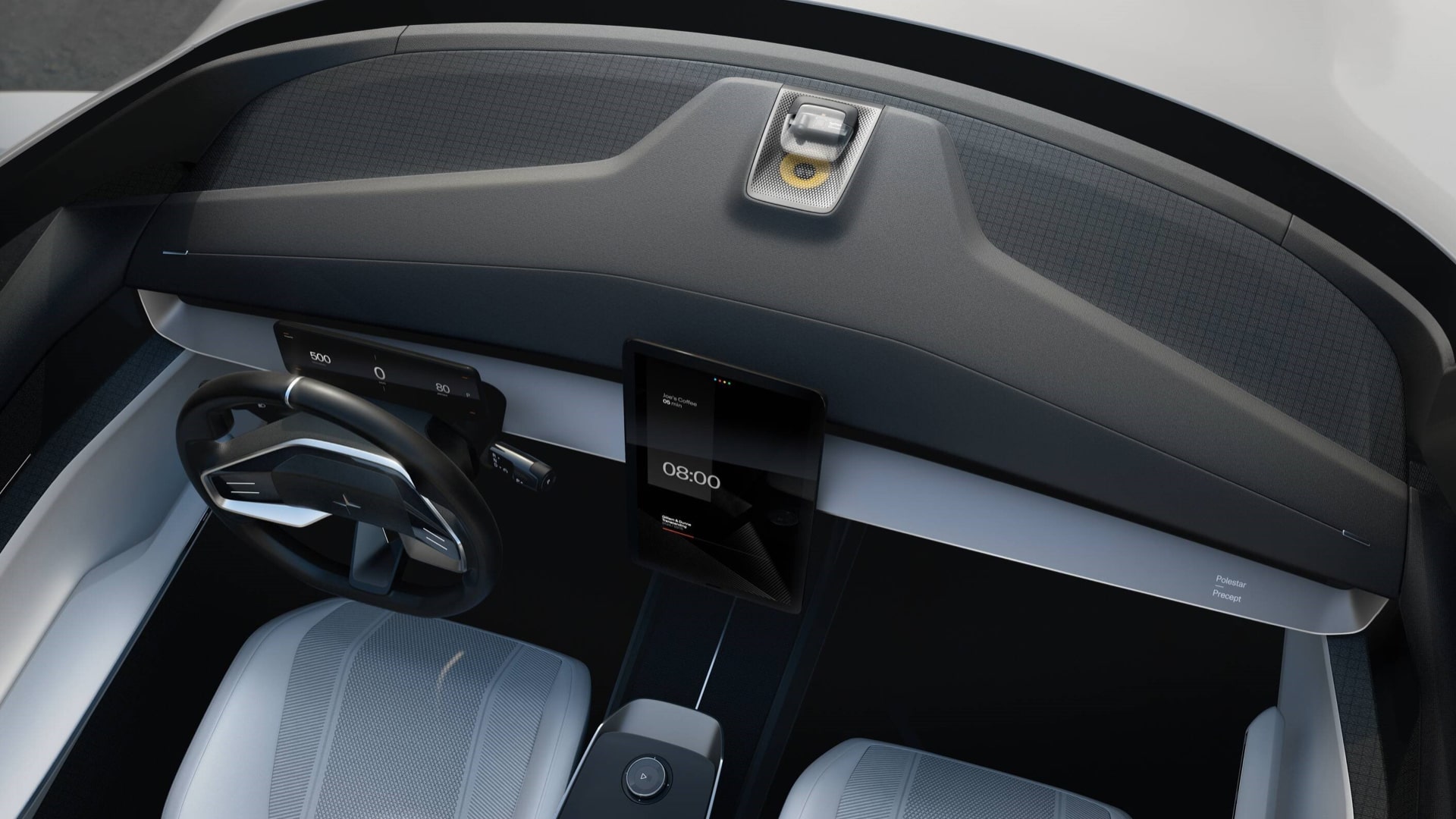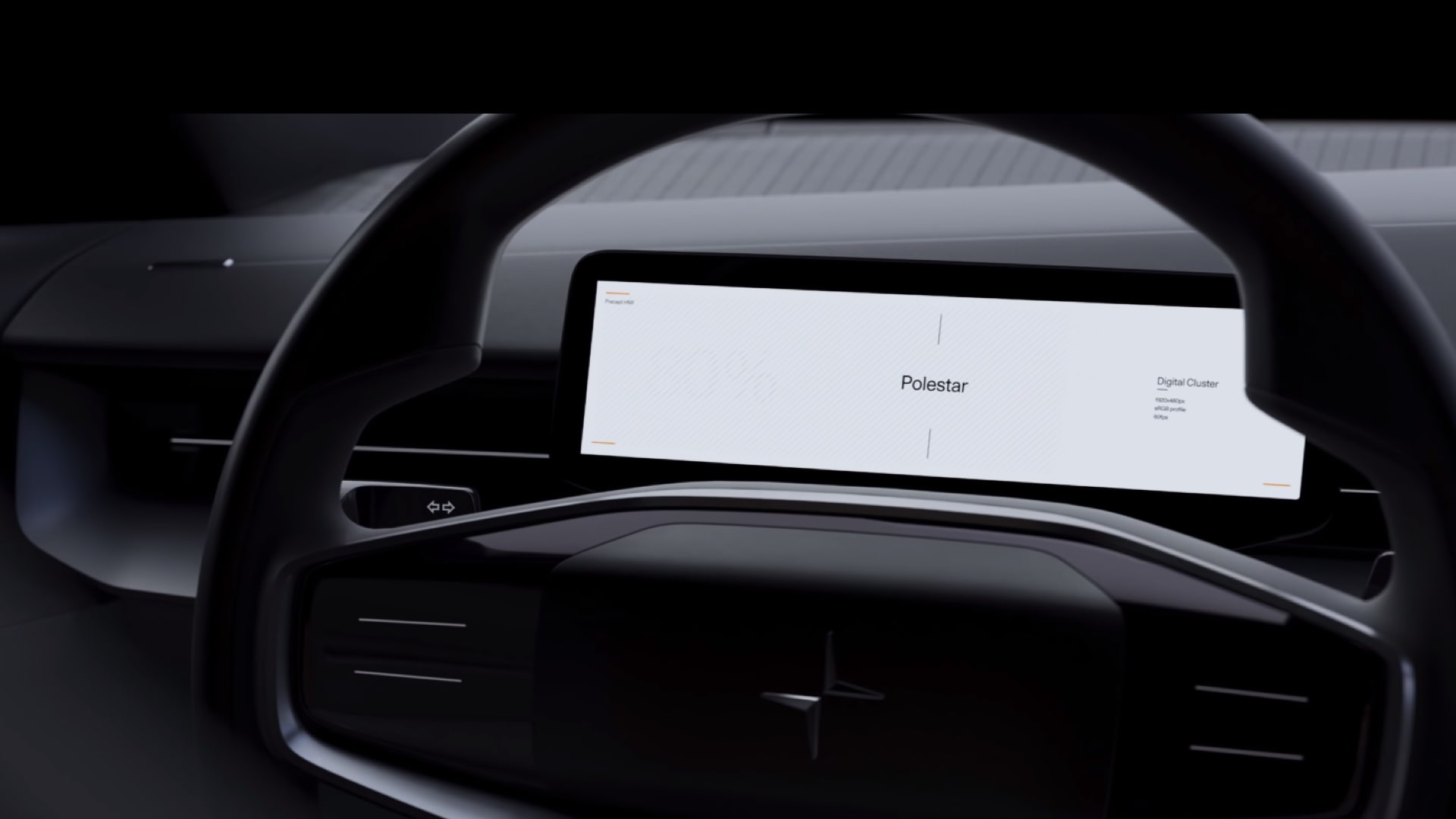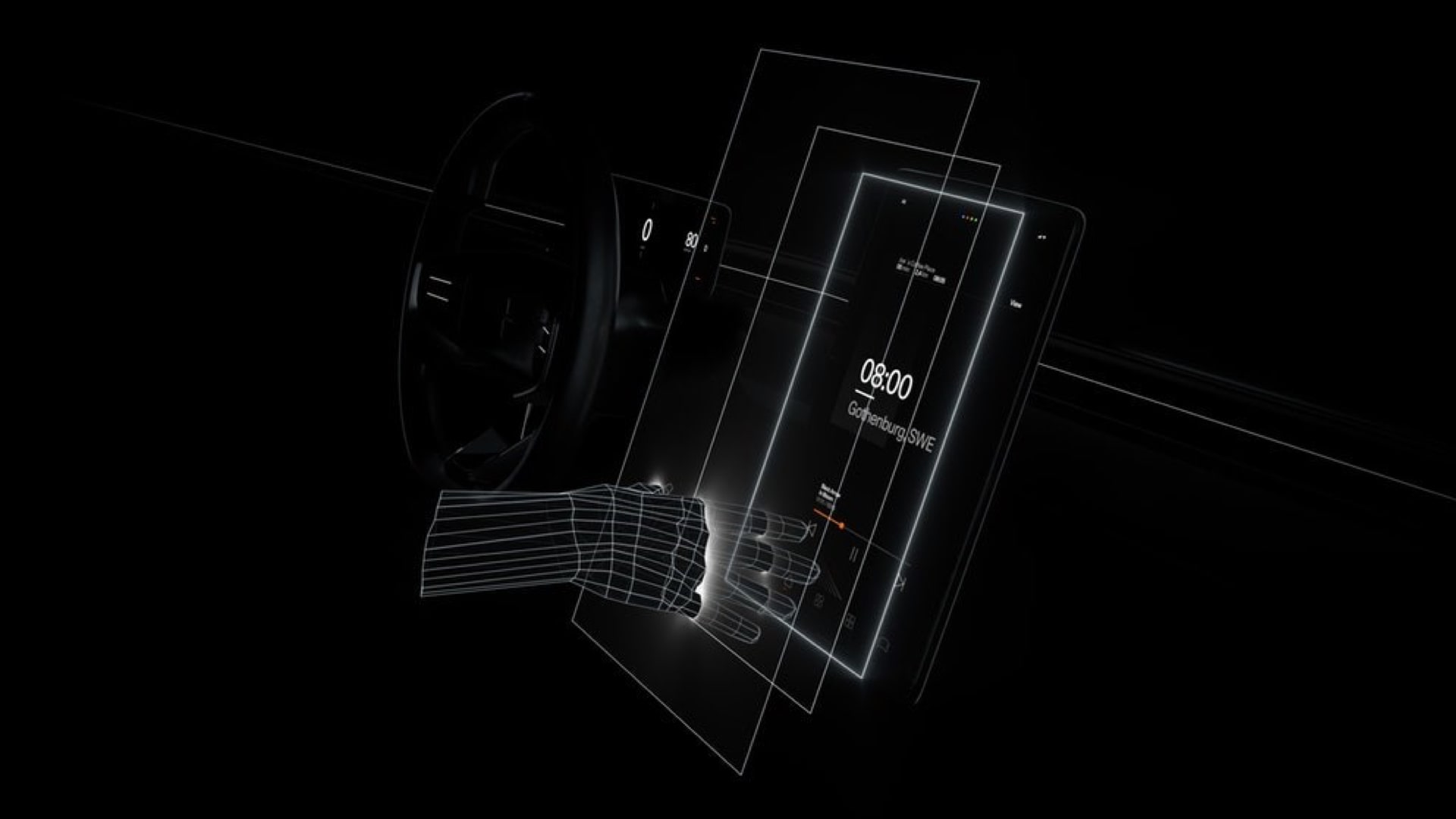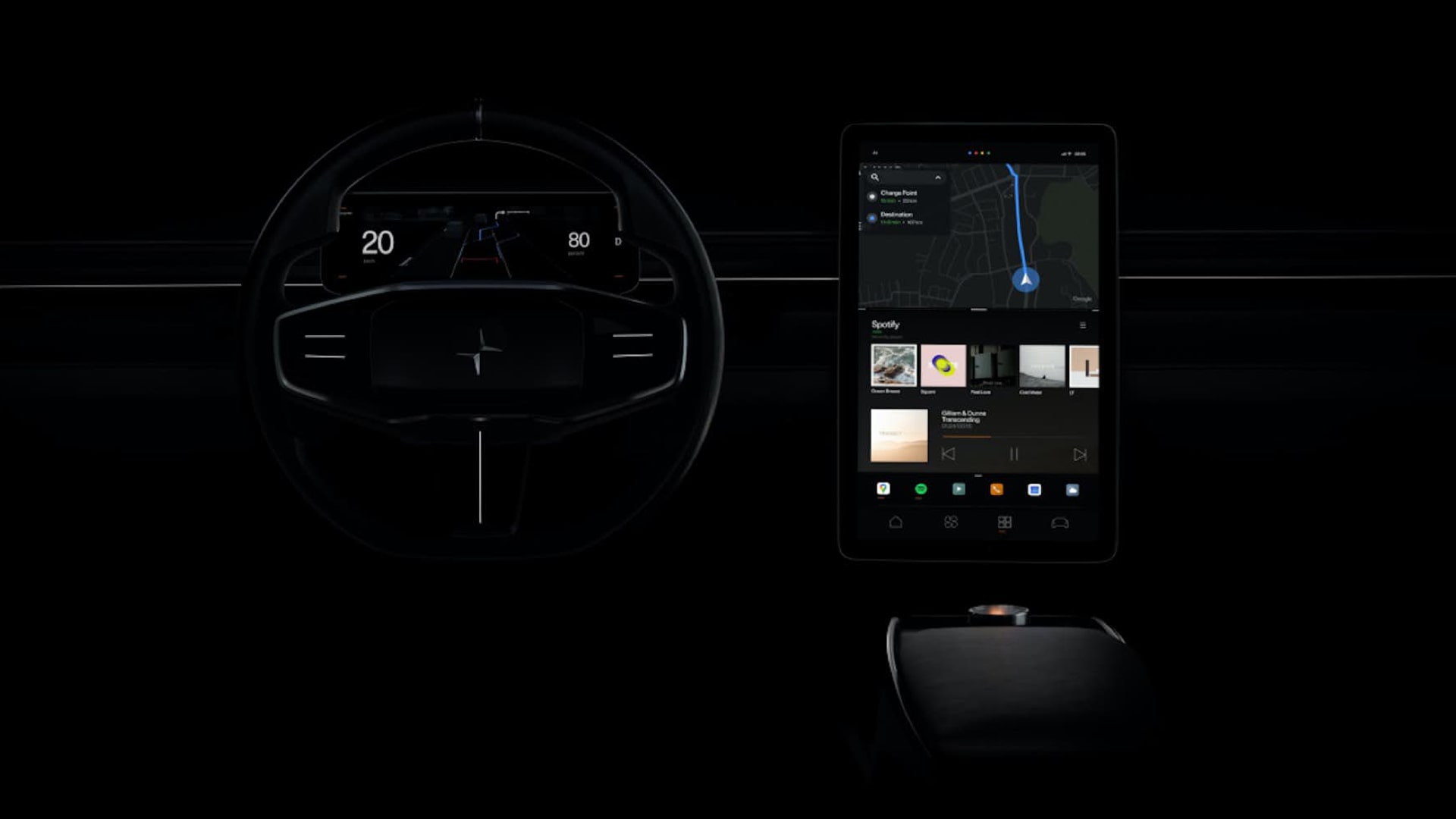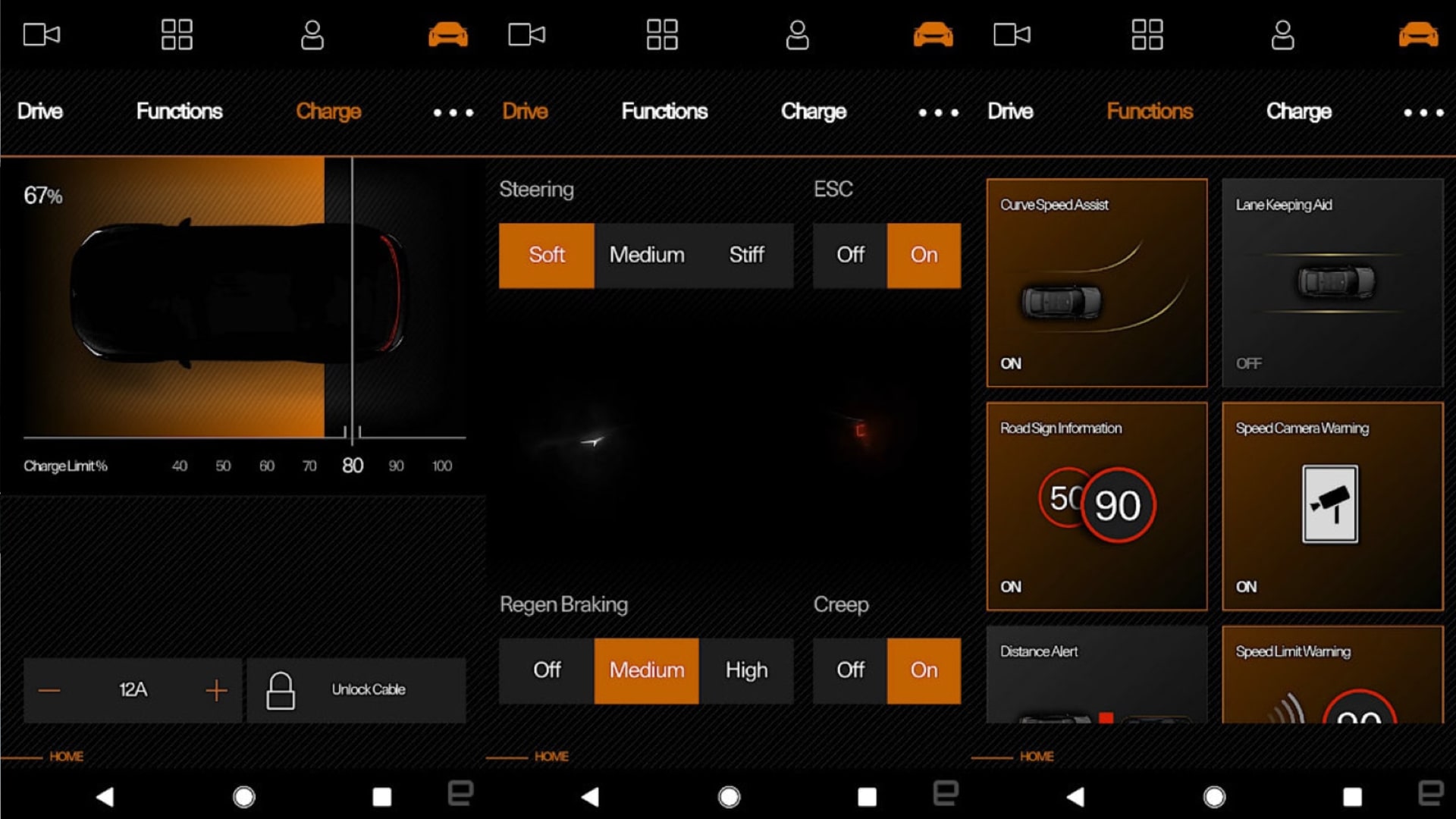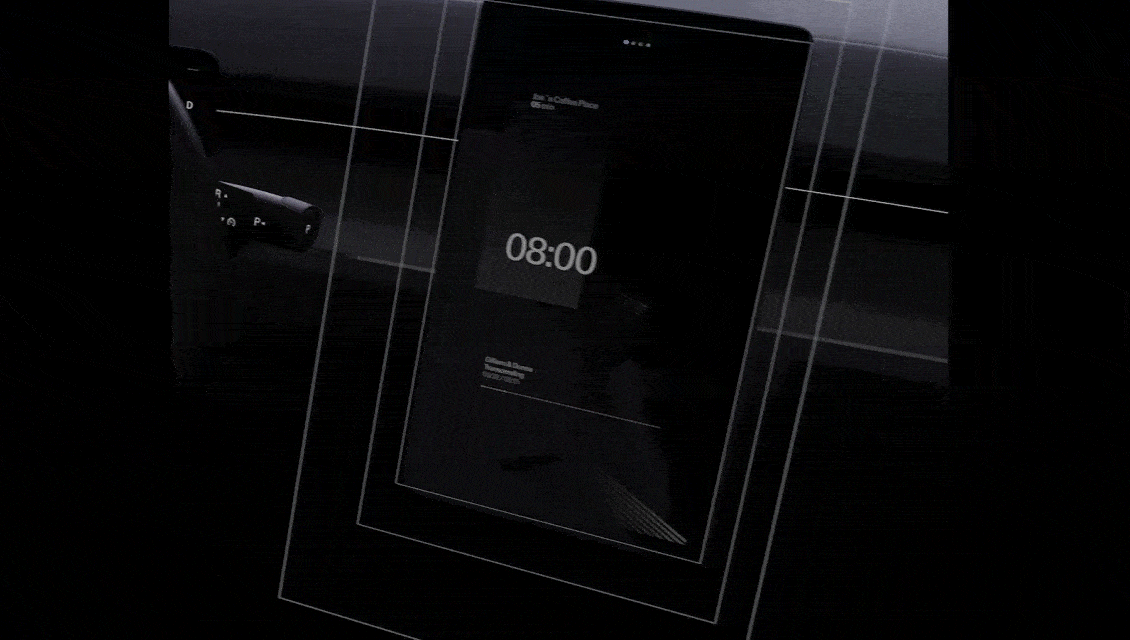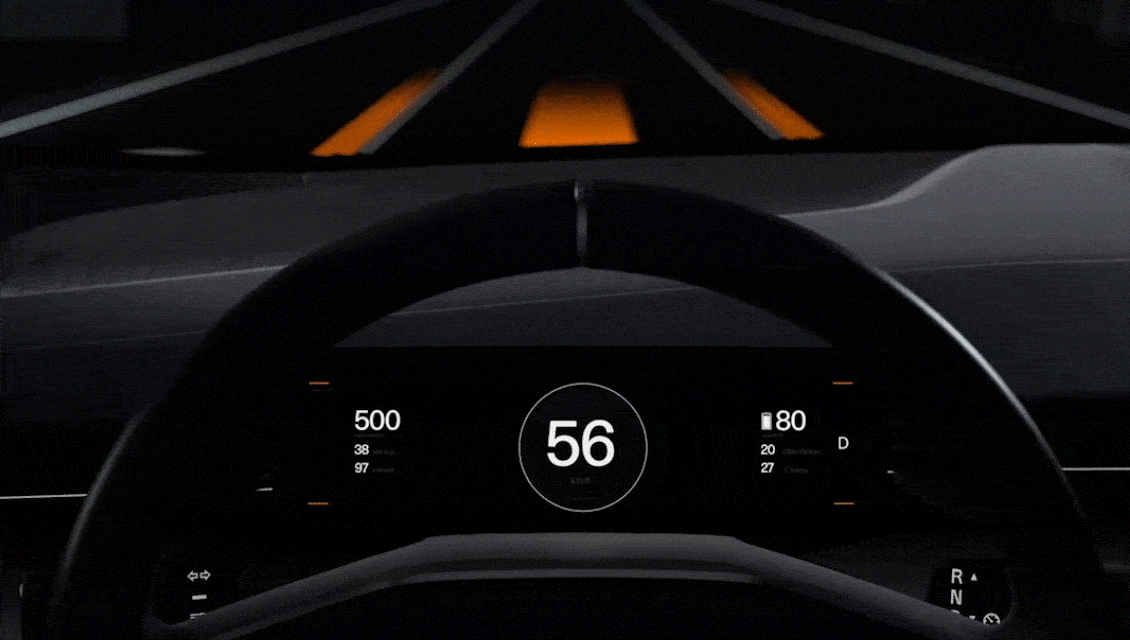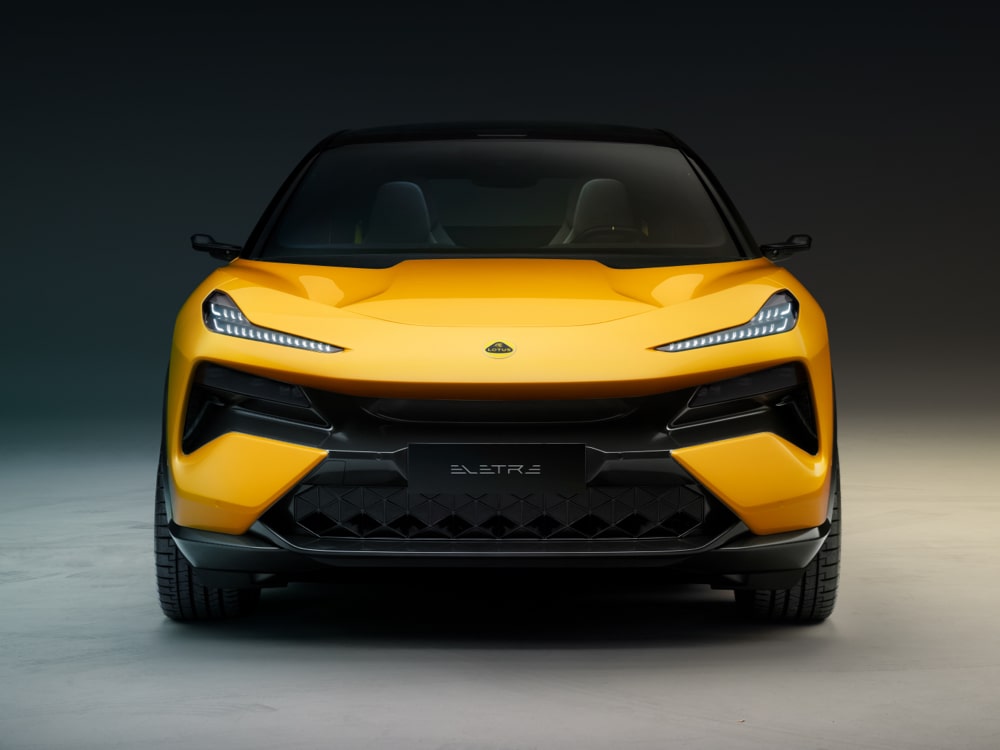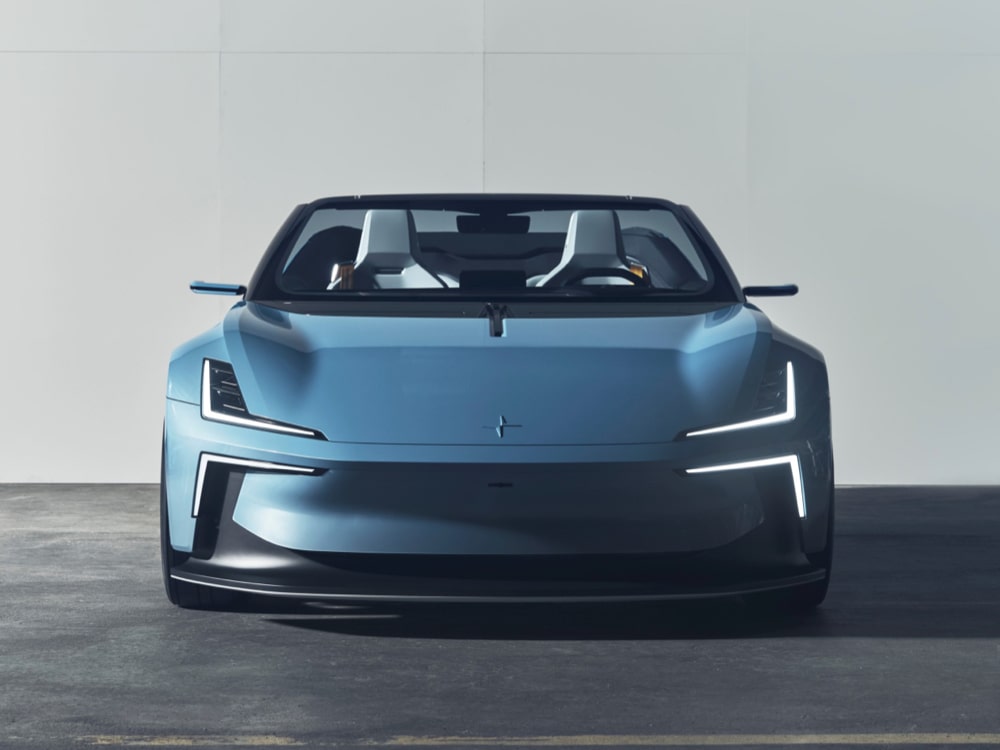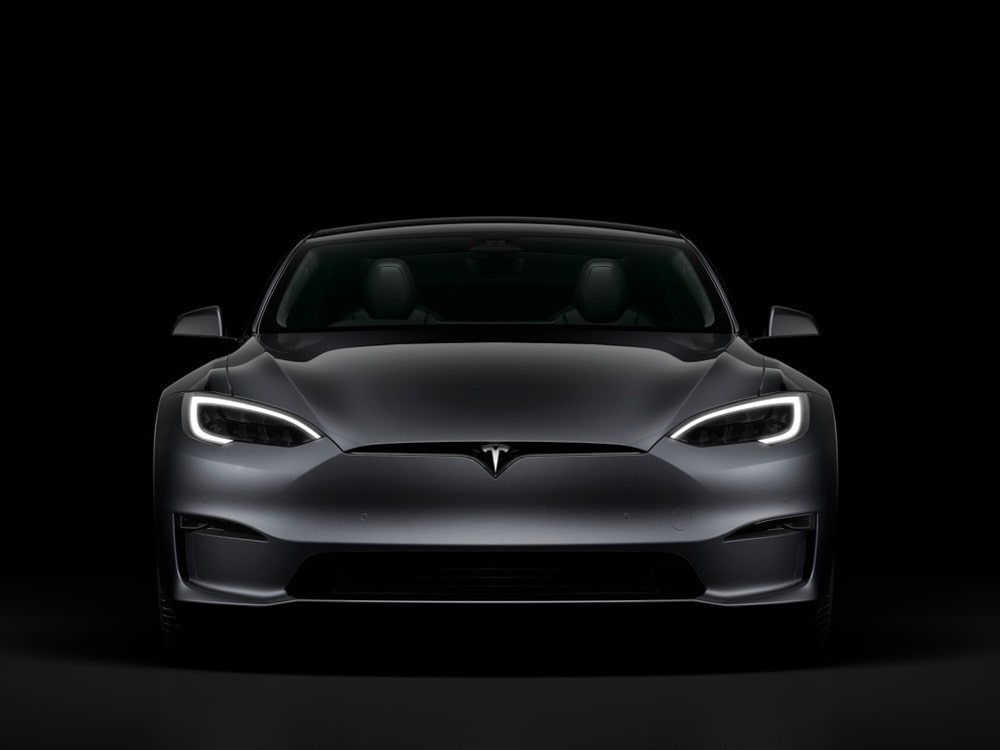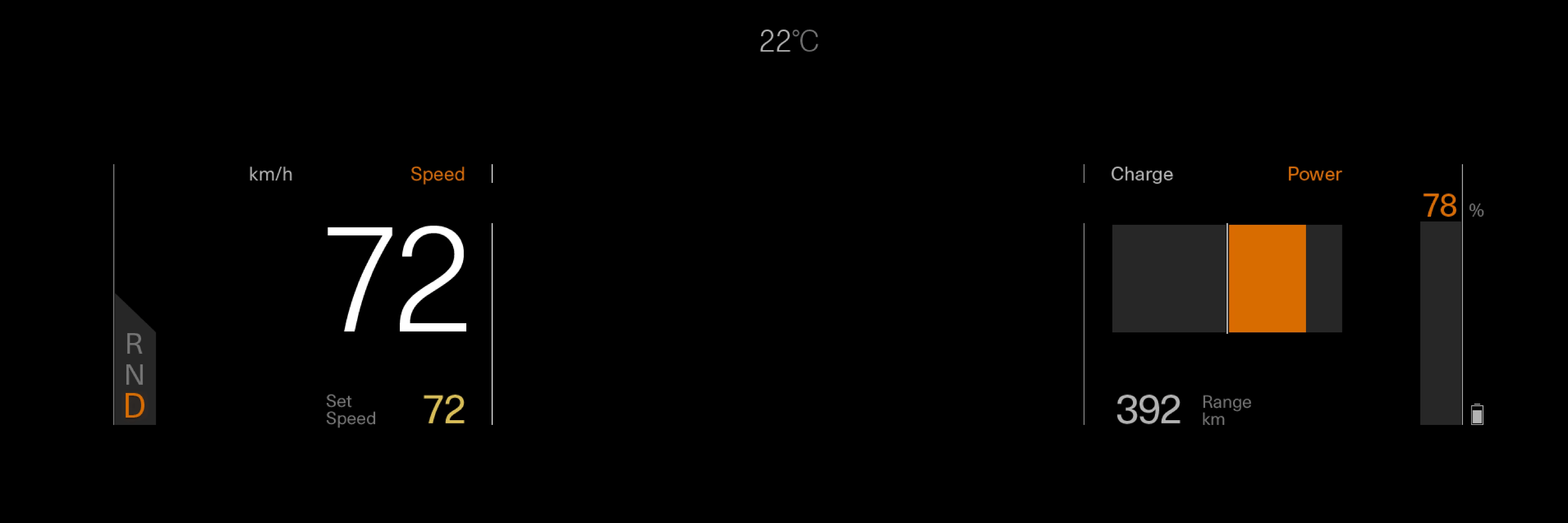
Polestar Precept HMI
HMI Design
Polestar Precept HMI Details
Vivid, colorful, gamified screens seem to be all the rage when it comes to "improving the in-car experience." But they catch the eye in a distracting way and make it harder to see the road in darkened driving conditions. The HMI featured in Precept takes a different approach, using eye-tracking and proximity sensors to adjust the displays to the driver's movements. So it can parcel out the right information, right when it's needed.
The Polestar 2 was the first car in the world to feature Google's Android Automotive OS powering its infotainment software. Polestar Precept continues this innovation, offering an Android-based system with even greater intuition and reaction, thanks to in-house development and Google's industry-leading navigation and voice recognition software.
The latest Polestar HMI displays what you need to know, when you need to know it, (you don’t always need to know everything) using eye tracking and proximity sensors to avoid unnecessary distraction.
Polestar will continue to use Android as a platform to build a truly personalised and contextualised experience. This integration will open up new possibilities in the car, beyond the already available adjustment of mirrors, seats, climate and entertainment settings to the driver’s personal preferences.
The vision now imagines the complete vehicle environment automatically adjusting to the user’s personal preferences and last-used applications. Tailored information will be displayed based on the detected driver profile, enabled by the Polestar Digital Key, when the driver approaches. With the driver’s permission, the system could even proactively offer personalised planning according to driver habits or preferences, or conditions.
The Google Assistant will be an even more helpful co-pilot while driving, using advanced speech technology to expand to more languages, understand local accents and provide more personalised experiences. The future will build on current Google Assistant functionality in the Polestar 2, all of which is delivered in a natural conversational flow that improves over time, rather than from a list of pre-set options.
Entertainment will become more relevant, not only when driving. Video streaming from popular apps and services will be made available as a convenient solution for occupants when the vehicle is parked and during charging.
Avoiding information overload is also key to Polestar’s offering and a further expression of the brand’s minimalist approach. Polestar will implement advanced eye-tracking and proximity sensors to deliver information in a controlled manner. Screens will alter their brightness and content based on conditions and reactions of the driver. Dimmed displays will increase intensity when users glance in their direction, and the approach of a user’s hand will adapt the presented controls. The system will also warn users if they are spending too much time looking at the screen rather than the road ahead.
Polestar will continue to partner with Google on advanced safety, as demonstrated by the fusion of Advanced Driver Assistance Systems (ADAS) and Google Maps. Integrated ADAS means the vehicle will use detailed map information to promote safer manoeuvres on the road.
Thomas Ingenlath the Polestar CEO said “Now we continue that story, sharing a vision that is even more in tune with the preferences of our individual customers. Building on the Android infotainment system in Polestar 2, our future systems will make life in our cars easier, safer and more fun.”
HMI Gallery
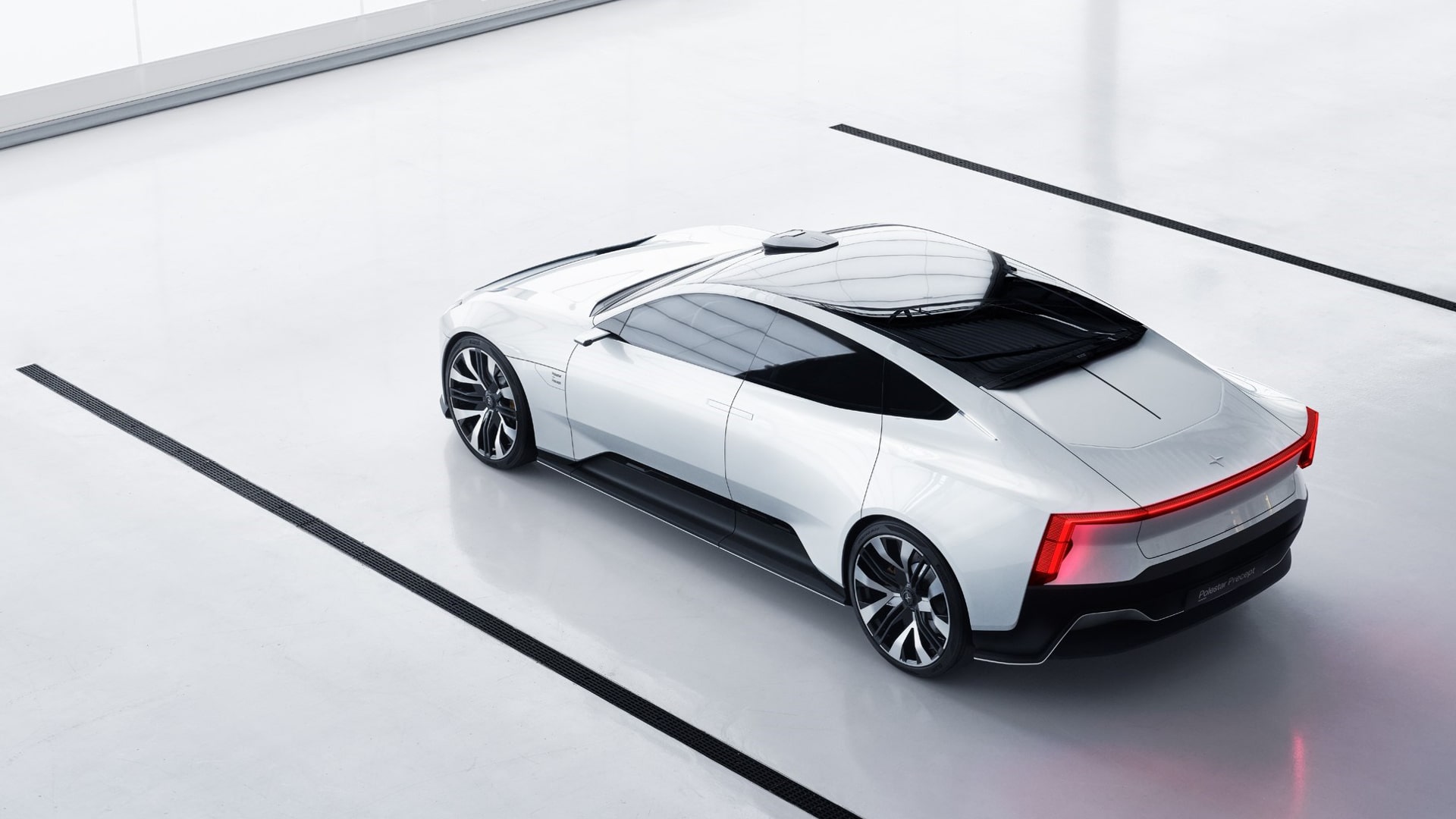
image source: media.polestar.com
Videos
Related Articles
More HMI Case Studies
Connect with us
HMI Gallery is a collection of case studies showcasing the features, functionality, fonts and iconography of digital interface design in high performance vehicles.
Curated by Ben Morris
Digital Creative
